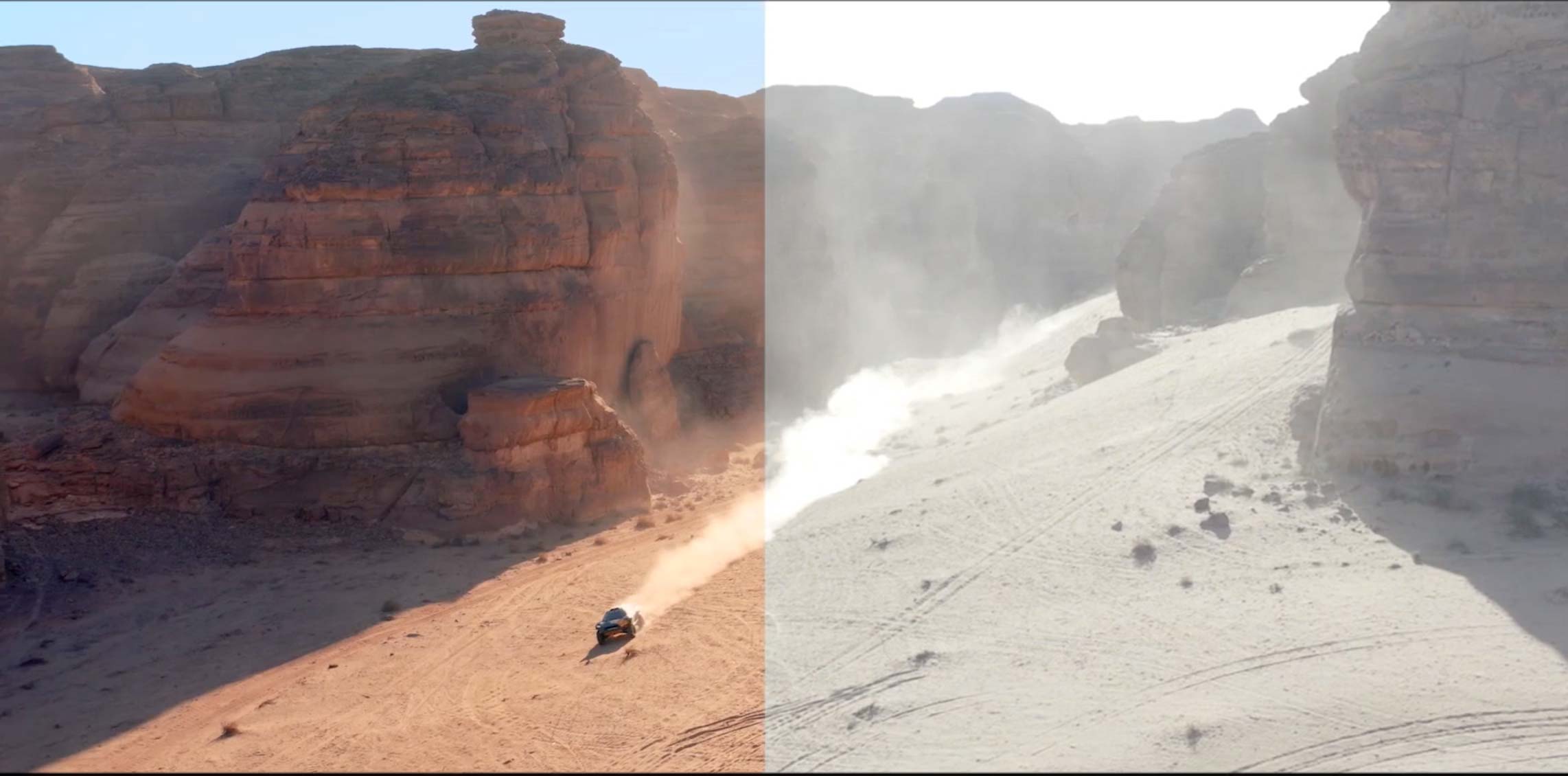What is colour grading?
The effect of colour grading is hard to see unless you have the before and after image side by side. A colour grade, whether immediately noticeable or not, is the way that you give your film a certain look and feel. It’s how you enhance or alter the colour of a video or still image to achieve a visual mood or tone. This is achieved by manipulating the footage using editing and lighting software. Once reserved for the cinema, colour grading effects are now the norm in TV and high-end video production.
Colour grading before & after examples
Our in-house colorist graded Discovery Channel’s ‘Hard Cell’ TV series, adding dynamism and flair to e-cars filmed in glamorous locations.
In contrast, this internal comms video we created for client on car safety required our colour grading service to add drama and pick out tones in an otherwise sombre setting.
Colour correction vs colour grading
So what’s the difference? While the color grading process adds drama, atmosphere, mood and emotion to footage, colour correction is a technical process that repairs colour issues, making footage appear as naturalistic as possible, mimicking how the human eye sees things. Also, if you are using footage from a variety of sources, or integrating stock footage or archive, colour correction can reduce the contrast between them.
Is colour grading necessary?
Short answer, yes. Colour grading is an essential part of the filmmaking process, giving viewers a polished finish that can enhance the video’s narrative. It’s why some videos look outdated, cheap or grainy, while others are a sumptuous feast to the eye. Some of our favourite film examples with a defining colour grade include The Grand Budapest Hotel, The Lord of the Rings and of course the brilliant Wizard of Oz.
Colour grading in video production
At Skylark we often film in RAW, which records all of the data from the camera sensor without any compression. This means that the first draft you see will look a little cloudy until our colour graders have processed you video to pick out the colours to enhance each shot to pick out a certain colour or create a certain mood.
What kind of videos are graded?
In short, professional level video that’s filmed in RAW can be graded. Whether it’s a production series for TV or a corporate film, colour grading can really make or break a video, bringing cinematic quality. Here’s one we shot for UWE, graded to set the tone of the video against the stunning new business school building.
Skylark Media shoots with both 4K and state of the art Sony FS7 cameras. Initially and at first draft stage, the footage appears flat, but this is because it is optimised for colour grading, something that’s normally done at the end of the post-production process.
As an agency specialising in colour grading, we’re happy to talk you through the options required by your brief. Get in touch with Jo at [email protected] today.

